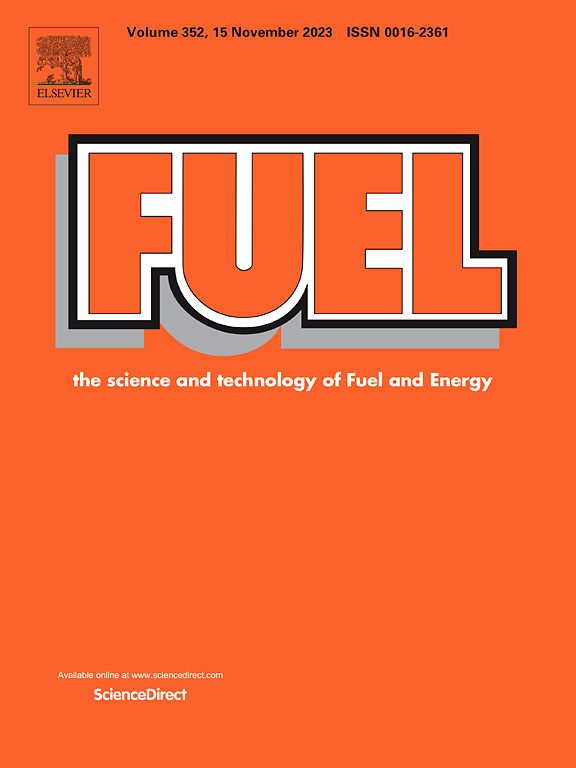Performance of solid propulsion fuels under simulated deep space exploration conditions
IF 7.5
1区 工程技术
Q2 ENERGY & FUELS
引用次数: 0
Abstract
Solid-state propulsion technology for deep space exploration has emerged as a research priority. We independently designed and constructed a solid propellant ignition test system to simulate low temperature and low pressure environments (temperature range: −55 ℃ to 20 ℃; pressure range: 0.01 atm to 1 atm). The reaction process was thermodynamically simulated using CEA software. Experimental and simulation results were analyzed through advanced data processing algorithms, including image recognition and thermodynamic modeling. The results of the study show that the ignition delay time tig of the solid propellant increases by 1.05 s, the burning rate r decreases by 0.33 mm/s, and the expansion velocity of the flame zone on the surface of solid propellant (burning surface expansion rate) u decreases by 1.22 mm2/s when the temperature decreases from 13 ℃ to −55 ℃. When the pressure was reduced from 1 atm to 0.3 atm, the ignition delay time tig increased by 2.74 s, 2.10 s, and the burning rate r decreased by 0.60 mm/s, 0.45 mm/s for 20 ℃ and −40 ℃ temperatures, respectively. Furthermore, ignition failure occurs under sufficiently low pressures, and the critical pressure threshold for ignition failure increases with decreasing ambient temperature. These findings provide valuable guidance for the application of solid propellants in deep space exploration.
模拟深空探测条件下固体推进燃料性能研究
用于深空探测的固态推进技术已成为研究的重点。自主设计建造了模拟低温低压环境的固体推进剂点火试验系统(温度范围:−55℃~ 20℃;压力范围:0.01 atm至1 atm)。采用CEA软件对反应过程进行了热力学模拟。通过先进的数据处理算法,包括图像识别和热力学建模,对实验和仿真结果进行了分析。研究结果表明,当温度从13℃降低到- 55℃时,固体推进剂的点火延迟时间tig增加了1.05 s,燃烧速率r降低了0.33 mm/s,固体推进剂表面火焰区的膨胀速度(燃烧表面膨胀率)u降低了1.22 mm2/s。在20℃和- 40℃温度下,当压力从1 atm降低到0.3 atm时,点火延迟时间tig分别增加2.74 s和2.10 s,燃烧速率r分别降低0.60 mm/s和0.45 mm/s。点火失效的临界压力阈值随着环境温度的降低而升高。这些发现为固体推进剂在深空探测中的应用提供了有价值的指导。
本文章由计算机程序翻译,如有差异,请以英文原文为准。
求助全文
约1分钟内获得全文
求助全文
来源期刊

Fuel
工程技术-工程:化工
CiteScore
12.80
自引率
20.30%
发文量
3506
审稿时长
64 days
期刊介绍:
The exploration of energy sources remains a critical matter of study. For the past nine decades, fuel has consistently held the forefront in primary research efforts within the field of energy science. This area of investigation encompasses a wide range of subjects, with a particular emphasis on emerging concerns like environmental factors and pollution.
 求助内容:
求助内容: 应助结果提醒方式:
应助结果提醒方式:


